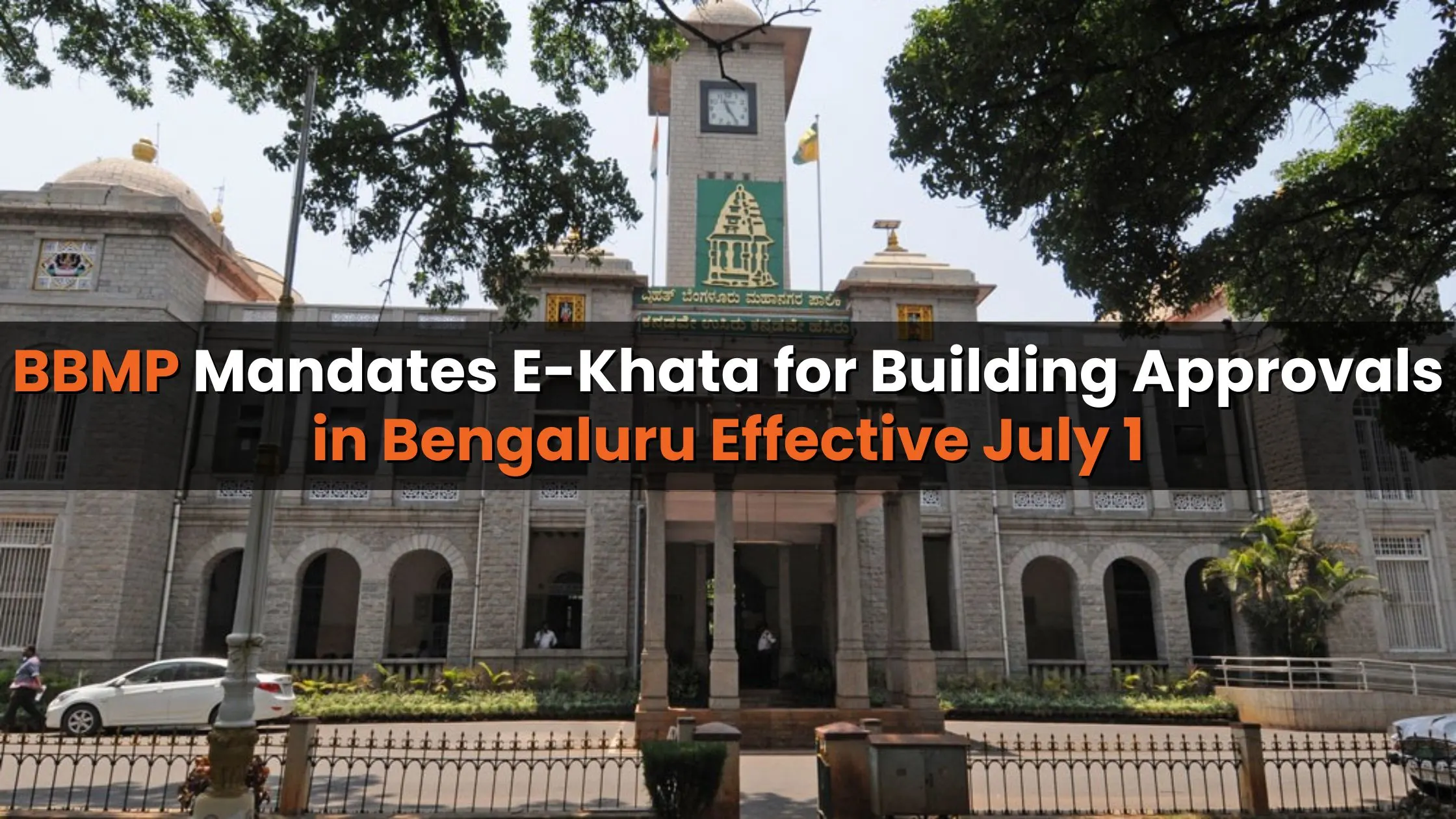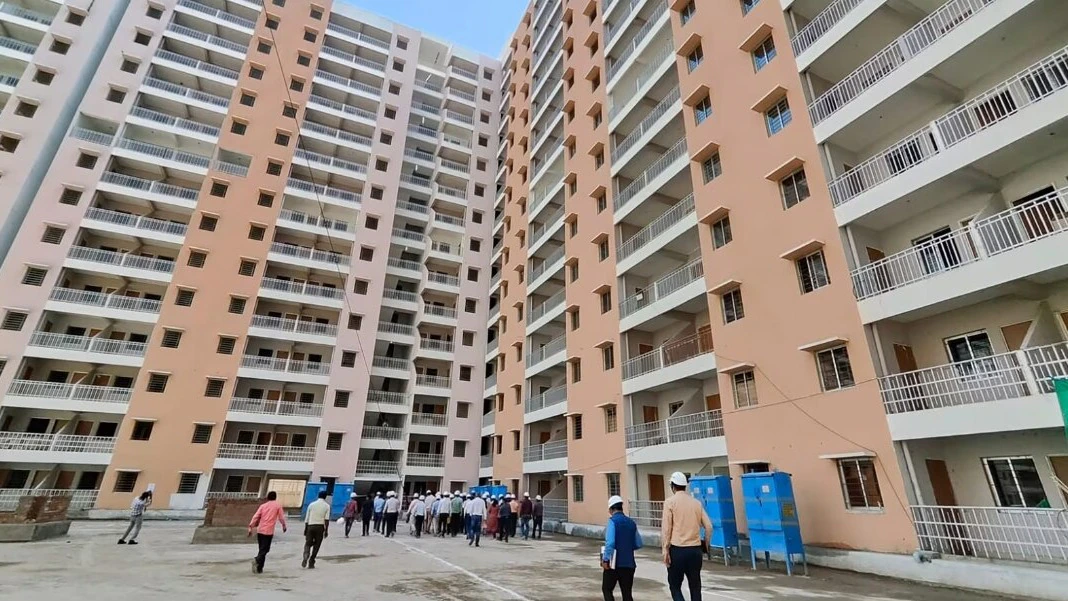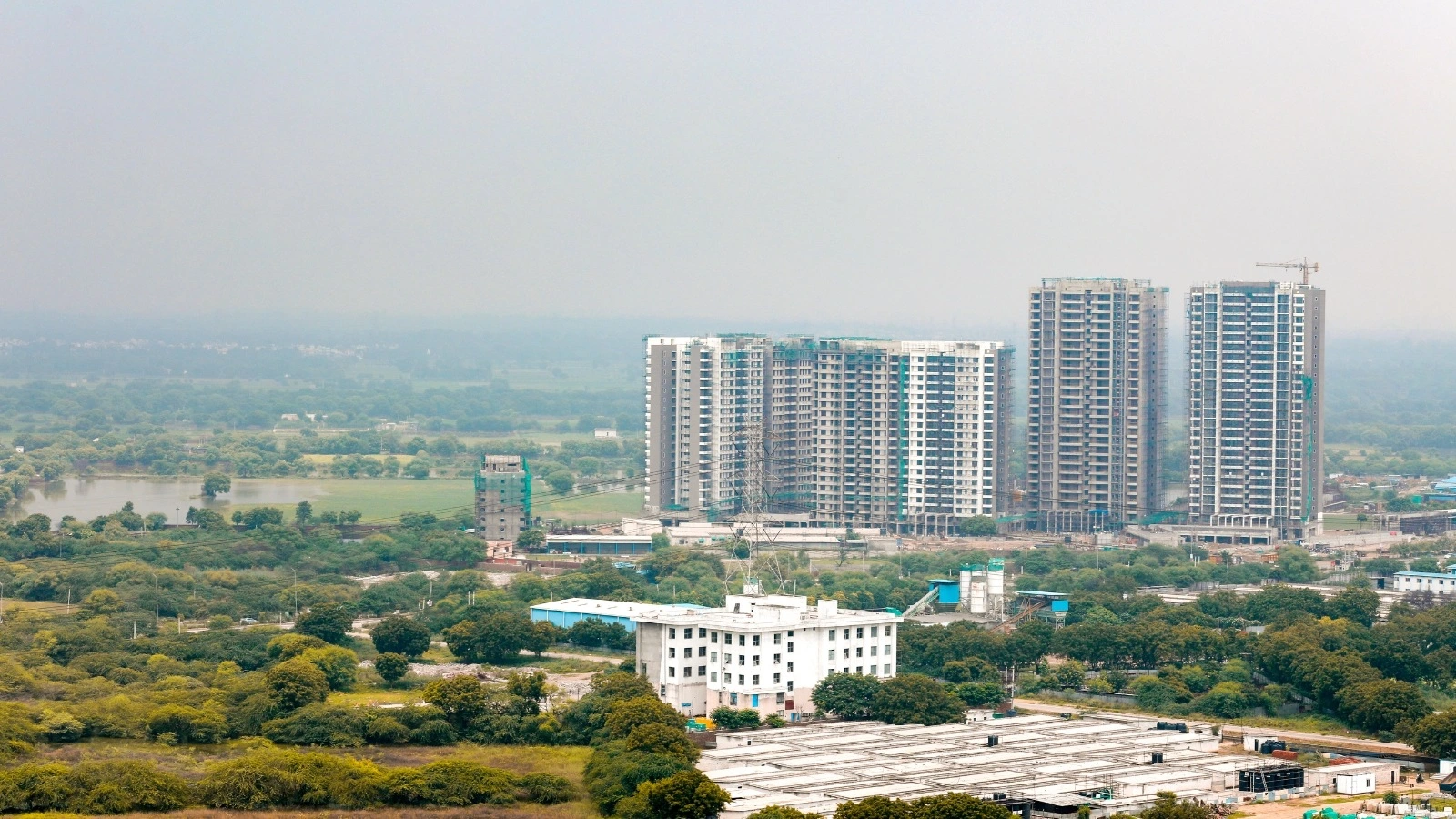Table of Content
The Bruhat Bengaluru Mahanagara Palike (BBMP), Bengaluru's civic authority, has introduced a landmark reform to streamline and digitize the building plan approval process. From July 1, 2025, submitting an e-Khata will be a compulsory requirement for all online building plan applications. This transformative move seeks to enhance transparency, improve efficiency, and simplify real estate operations in one of India’s fastest-growing cities.
What is E-Khata?
E-Khata, or electronic Khata, is a digitized property record that provides comprehensive details about ownership, property taxes, and other essential information. Managed via the BBMP’s E-Aasthi platform, e-Khata serves as a reliable and accessible record of property details. Unlike manual property documents, which are prone to errors and mismanagement, e-Khata ensures accuracy, transparency, and efficiency in urban property management.
The document contains:
- Property ID (EPID) number.
- Ownership details.
- Tax payment history.
- Other critical property-related data.
E-Khata has become indispensable for property transactions, loan approvals, and now, building plan approvals.
Also Read: Bengaluru RWAs Set Green Example on World Environment Day 2025
The BBMP’s New Mandate
In its official announcement, the BBMP outlined that all applicants for building plan approvals must submit an e-Khata. The process involves entering the property’s e-Khata or EPID number into the Online Building Plan Approval System (OBPS) portal. The integrated system will then automatically cross-verify ownership and tax compliance through the E-Aasthi database, eliminating manual submissions and delays.
The BBMP’s mandate is part of its broader mission to digitize urban governance and foster a transparent, citizen-friendly approach to service delivery.
Objectives of the E-Khata Requirement
The introduction of mandatory e-Khata submission for building plan approvals aligns with several key objectives:
- Enhanced Transparency: By integrating the OBPS and E-Aasthi platforms, the BBMP ensures that accurate property details are readily available for verification.
- Streamlined Workflow: Automated verification reduces redundant paperwork and expedites the approval process.
- Accountability: Officials are now bound by strict timelines for plan approval, ensuring timely decision-making.
- Digital Governance: The initiative reflects the BBMP’s commitment to adopting smart city principles by leveraging technology for efficient service delivery.
How the New Process Works
The revised approval system is designed to simplify and digitize the application process. Here’s how it works:
- Access the Portal: Applicants log into the OBPS portal to initiate their building plan approval application.
- Input E-Khata Details: Applicants enter the property’s EPID or e-Khata number into the system.
- Automatic Verification: The system cross-verifies the property’s tax and ownership records with the E-Aasthi database.
- Plan Approval: Based on verification, plans are approved, rejected, or flagged for discrepancies.
This automated process ensures minimal human intervention, reducing errors and delays.
Key Features of the New Framework
The integration of the OBPS and E-Aasthi platforms offers several notable features:
- Digital Integration: The seamless connection between the two systems ensures real-time verification.
- Deemed Approvals: If town planning officials fail to approve or reject applications within stipulated timelines, the system will automatically grant approvals, ensuring fairness.
- Accountability Mechanisms: Zonal commissioners will oversee inaction and initiate disciplinary measures against negligent officials.
- Simplified Submissions: Applicants no longer need to manually submit property records to the Revenue Department, reducing administrative burden.
Advantages for Stakeholders
The BBMP’s e-Khata mandate offers significant benefits to various stakeholders:
For Property Owners:
- Faster approvals.
- Reduced paperwork.
- Transparent verification process.
For Builders and Developers:
- Predictable timelines for project approvals.
- Reduced risk of delays caused by manual errors.
For BBMP Officials:
- Streamlined workflows with automated systems.
- Improved service delivery metrics.
Addressing Challenges
While the initiative is a step in the right direction, its success hinges on overcoming certain challenges:
- System Integration: Ensuring a smooth connection between the OBPS and E-Aasthi platforms is crucial.
- Awareness and Training: Property owners, developers, and BBMP staff must be adequately trained to navigate the new system.
- Data Security: Safeguarding sensitive property data from breaches is essential for maintaining trust.
Also Read: Man Earning More Than 95% of Indians Struggle to Afford a Home in Gurgaon
A Step Towards Smarter Urban Governance
The mandatory integration of e-Khata for building plan approvals is part of a larger vision by the BBMP to digitize Bengaluru’s urban governance. Other initiatives, such as the introduction of QR codes for property details and a ‘Trust and Verify’ framework for accountability, complement this move. Together, these measures aim to transform Bengaluru into a digitally empowered metropolis.
Conclusion
The Bruhat Bengaluru Mahanagara Palike (BBMP) has taken a decisive step towards modernizing Bengaluru’s real estate landscape by mandating e-Khata submissions for building plan approvals. By integrating digital platforms and automating processes, the BBMP is not only streamlining approvals but also ensuring transparency and accountability.
For property owners and developers, this initiative marks a new era of efficiency and predictability. While challenges remain, the move is a testament to the BBMP’s commitment to leveraging technology for better governance. As Bengaluru continues to grow, such reforms will play a crucial role in shaping its future as a smart and sustainable city.
Follow AquireAcers Whatsapp Channel to Stay Updated With The Latest Real Estate News








_1766133697.webp)
Ans 1. Starting July 1, 2025, all building plan approval applications in Bengaluru must include an e-Khata, a digital property record, to streamline the process and ensure transparency.
Ans 2. E-Khata is an electronic property record that provides details such as ownership, tax history, and property identification, managed via the BBMP’s E-Aasthi platform.
Ans 3. To enhance transparency, improve efficiency, and reduce manual errors by integrating property verification with the Online Building Plan Approval System (OBPS).
Ans 4. Applicants log into the OBPS portal, enter their e-Khata (EPID) number, and the system automatically verifies property details with the E-Aasthi database before approving or flagging plans.
Ans 5. Real-time verification between OBPS and E-Aasthi.Deemed approvals if applications are not processed within specified timelines.Simplified, paperless submissions.
Ans 6. Faster approval processes.Reduced paperwork.Transparent verification and reduced manual errors.
Ans 7. Predictable timelines for approvals.Reduced delays due to manual interventions.Improved project planning efficiency.
Ans 8. Zonal commissioners oversee application processes, and disciplinary actions are initiated against officials who fail to meet timelines.